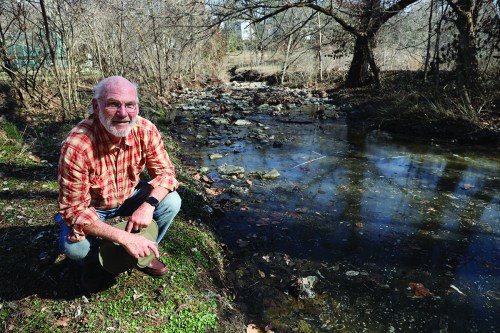By Jess Holmes
It’s thanks to the Saint Louis Zoo’s Michael Dawson that spring peepers, chorus frogs, and cricket frogs are still on the map — literally. Dawson’s creation and maintenance of the FrogWatch chapter known as the Spring Peeper Program in St. Louis has put these small, but noisy creatures back on conservation radar.
Statewide, these critters are not near extinction, but Dawson explores the effects urbanization has had on their significant population loss in the St. Louis area, while also encouraging the community to get involved in reversing their decline.
“I started looking at data collected by citizen scientists, species by species. One of the patterns I recognized is that certain species were almost completely absent inside of I-270. Whereas you go three minutes outside of I-270, they show back up on the observation maps,” Dawson said. “Some frog species are unaffected by urbanization, but the spring peepers, chorus frogs, and cricket frogs all seemed to be.
“I wanted to see if the citizen-collected data was true, and the Zoo encouraged me to put a project together. So, I did. After getting it approved and funded, I started setting up acoustic surveying devices around the St. Louis area,” Dawson explained. “Over the last three years, I found that the citizen scientists were right.”
The Saint Louis Zoo FrogWatch program stems from an even larger effort, FrogWatch USA. The Akron Zoo manages the national program. The mission is to build a community to help the frog and toad populations across the United States. Thanks to smartphones, this has become even easier.
“If you’re out in the field and have a phone, you can record a frog’s call,” Dawson said. “Recording calls is even better than using photos because I can download it, put it through my software, and can determine what species it’s from. Plus, it’s timestamped and GPS coded. It’s no different than the recording devices I leave out on trees.”











